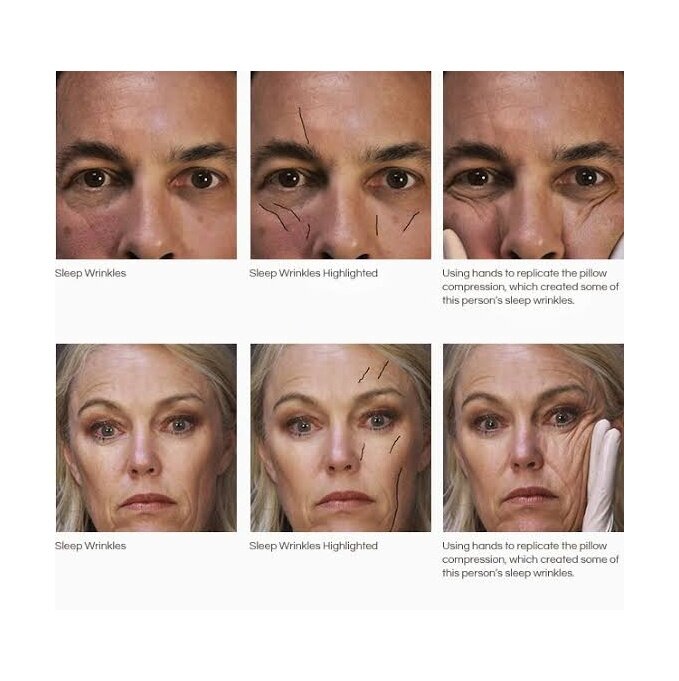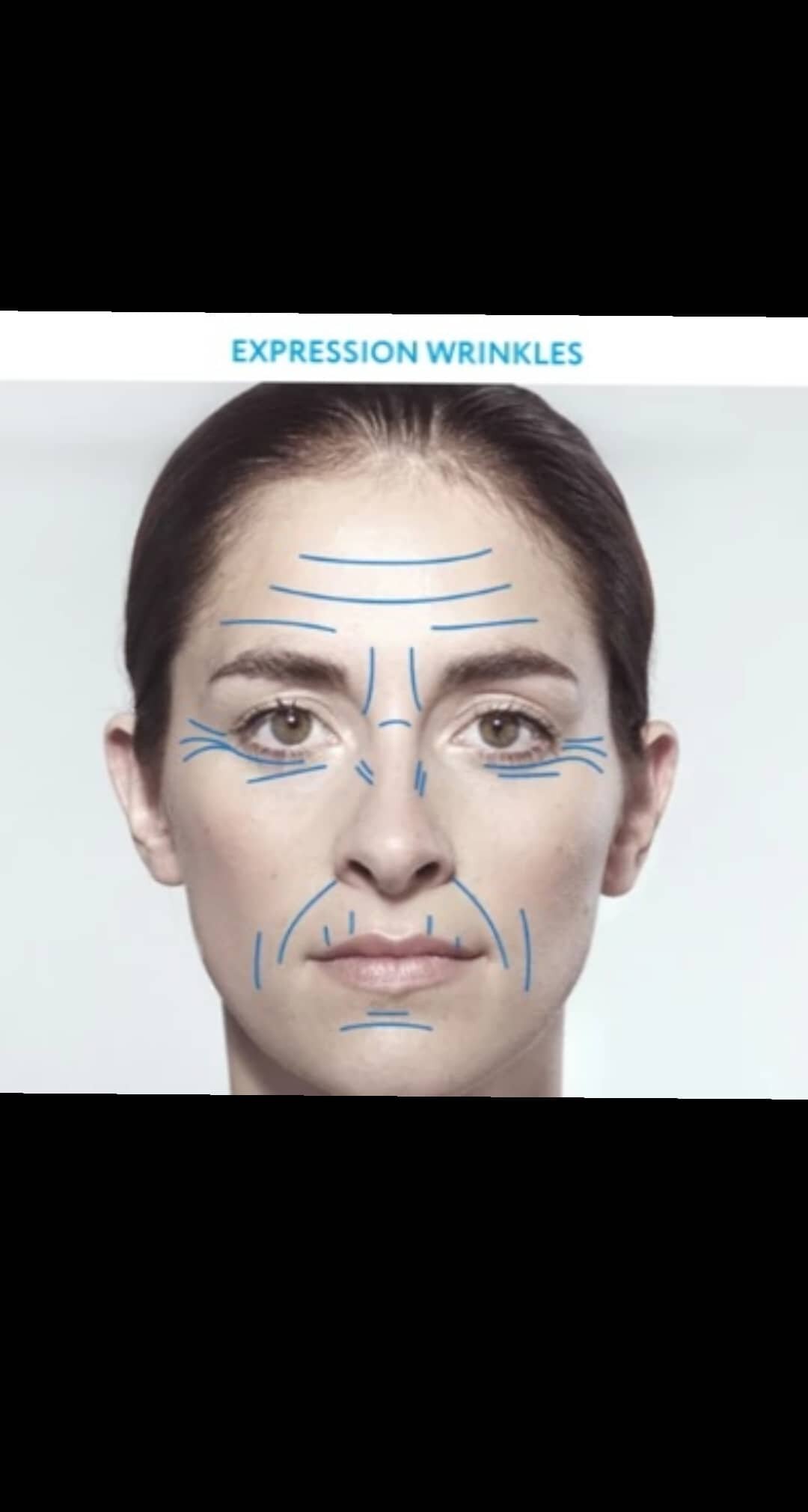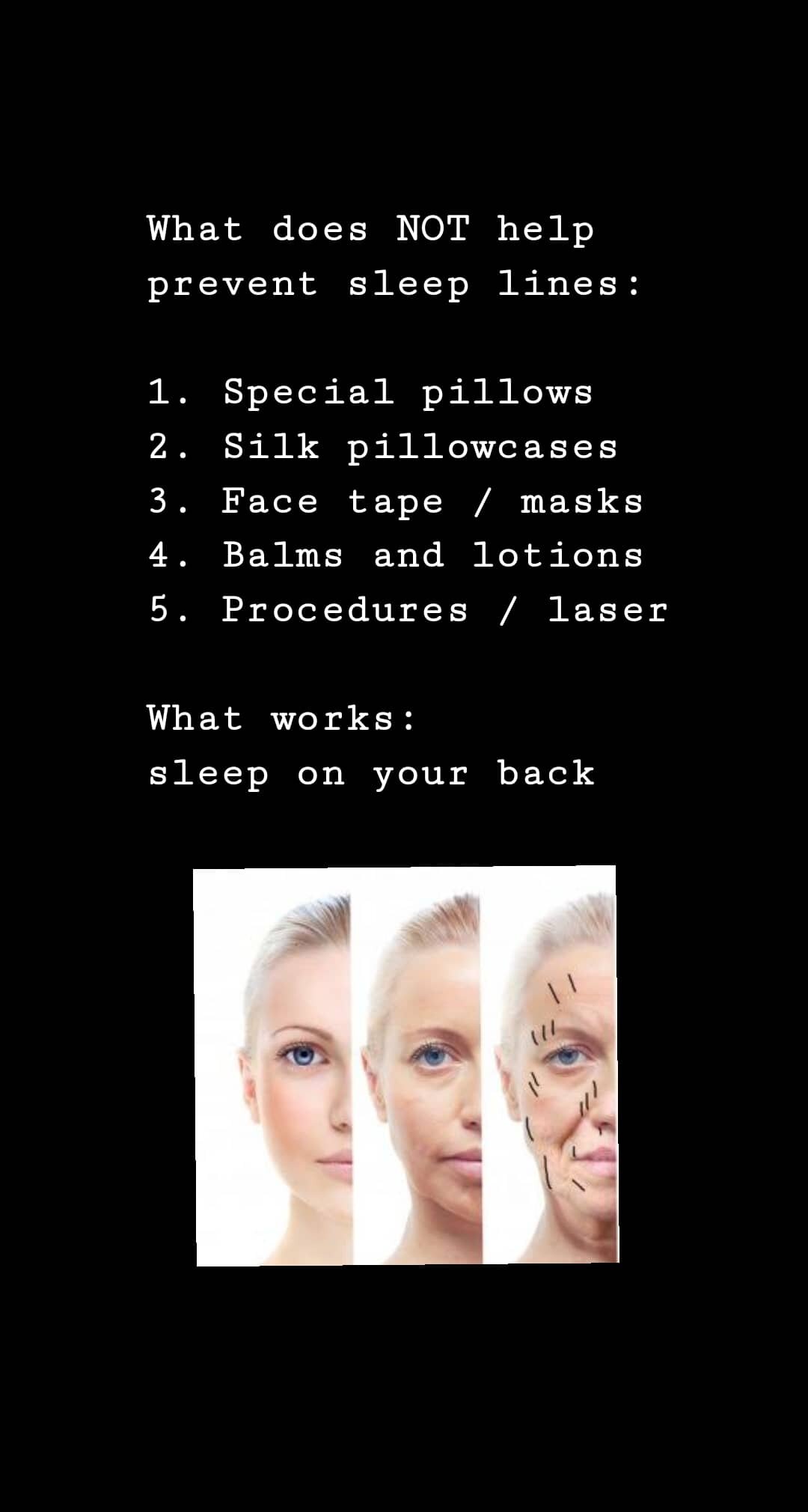Sleep Wrinkles
Lines and wrinkles form when skin ages - this can be due to external factors (such as sun damage, pollution, chemical exposure or physical strain) or internal factors (such as genetic factors, sleep deprivation, stress or dietary deficiency).
Sleep wrinkles are a specific kind of lines formed in the face, by the forces squishing skin into the pillow or sheet, depending on sleeping posture.
Sleep wrinkles are very different from lines of expression (the furrows formed when we animate, such as frown lines on the forehead, or laugh lines around the mouth and crinkling around the eyes.
Lines of expression form where skin folds due to contraction of the underlying facial muscles - forming deep creases from repeated movements.
On the other hand, sleep wrinkles form after skin is folded on pressure when sleeping on the face - the crease forms in areas of facial ligaments - possibly because these are fixed bands, skin is held back at.
TREATMENT
Botox can relax muscles temporarily and thus prevent and soften lines of expression, but does not work on the lines of compression (the sleep lines). To treat sleep lines, we need resurfacing treatments (like microneedling), lifting treatments (like Ultraformer), restoring treatments (dermal fillers).
To prevent sleep wrinkles it is best to sleep on one’s back as much as possible. Sleeping on the sides is a little bit better than on the tummy, which causes maximum wrinkling.
Image Source: “Sleep Wrinkles: Facial Aging and Facial Distortion During Sleep.” G Anson, Michael A. Kane, Val S. Lambros. Published in Aesthetic surgery journal 2016. DOI:10.1093/asj/sjw074











